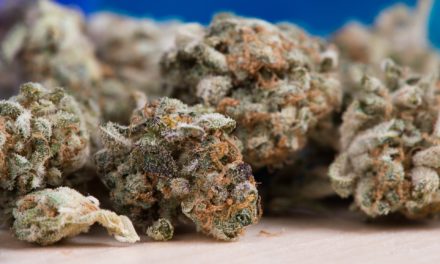People suffering from psychotic disorders often self-medicate with cannabis. While they may enjoy getting high and generally experience social benefits from smoking weed with others, one underlying motivation behind this population’s affinity for cannabis is the substance’s ability to mitigate undesired symptoms related to psychotic disorders.
However, there is growing evidence showing that patients with a psychotic disorder who smoke high-potency cannabis (defined in the study as cannabis containing strong concentrations of delta-9-tetrahydrocannabinol [THC] and weak concentrations of cannabidiol [CBD]) have poorer outcomes than those who abstain from using cannabis or smokers who later discontinue its use. Patients who continue using high-potency cannabis tend to experience more psychotic episodes and have an increased chance of being hospitalized.
A study recently published in Harm Reduction Journal investigated whether patients with a psychotic disorder would accept smoking pharmaceutical cannabis variants that are less harmful than high-potency cannabis.
Potential Harms of High-Potency Cannabis
THC appears to be the primary cause behind the psychotomimetic effects of cannabis, while research on CBD has shown that it may actually curb THC-induced anxiety and psychosis. A web-based cross-sectional survey found that the consumption of high-CBD cannabis was associated with significantly fewer psychotic episodes than smoking cannabis with high-THC ratios.
Moreover, smoking high-CBD/low-THC strains induced less anxiety and fewer psychotic-like symptoms than the consumption of high-THC/low-CBD cannabis, indicating that cannabis rich in CBD and/or meager in THC may be an effective harm reduction approach for patients who plan to continue smoking cannabis.
Study Design and Inclusion Criteria
Twelve male outpatients who were in treatment for schizophrenia and a comorbid cannabis use disorder were included in this study. All used cannabis on a daily basis and were resistant to their treatment protocols (involving the administration of antipsychotic drugs). They were asked to smoke a joint (mixed with tobacco) on six separate occasions.
The cannabis that patients regularly smoked was used as a reference to gauge the acceptability of two pharmaceutical cannabis variants containing less THC (known as Bediol and Bedrobinol). The first and last joints contained the patient’s own cannabis (which was assayed for THC and CBD) while the other four joints (containing a variety of the low-THC medicinal variants) were offered in a randomized and blinded order.
One patient dropped out of the study after smoking two joints, but this was not linked to the consumption of the pharmaceutical cannabis.
Data Collection
The researchers collected baseline data involving demographic profiles, medication use, use of illegal drugs (including frequency of cannabis use), motivations for smoking cannabis, cannabis craving, anxiety and depressive symptoms, and quality of life.
This data showed that the patients’ own cannabis stacked up quite well with the strength of popular strains sold in Dutch coffee shops, featuring a high-THC/low-CBD ratio. Each patient smoked five joints per day (on average), and everyone in the group mentioned that they smoked cannabis for pleasure.
During each experimental session, the patients filled out a questionnaire multiple times (at 15, 60, and 120 minutes post-smoking) about their mood and their appreciation of the joint they smoked. At the 120-minute mark, they were also asked to express their opinions about the joint and whether they would be willing to switch from smoking their own cannabis to the alternative.
Results
There were very few undesired side effects from smoking the joints in the study. Psychotic-like symptoms were not observed at all, although occasional bouts of transitory nausea and dizziness did occur.
Patients reported that they accepted the pharmaceutical joints, however they did prefer their own cannabis. The main complaint the patients had about the medicinal variants was that they were significantly weaker. Apparently they didn’t taste as good either.
When asked if they would be willing to replace their own high-potency cannabis with one of the two medicinal variants, the patients did not provide clear answers. But they didn’t shut down the idea outright, offering that any potential transition would depend on two things: the experience of using the pharmaceutical cannabis on a long term basis and the options for being financially reimbursed.
While this was a small study, it found that cannabis-smoking patients with psychotic disorders appear to be willing to consume less THC and/or increase the amount of CBD, potentially even converting to medicinal variants. This would reduce the harms of consuming cannabis for this population, and further studies would need to be conducted in an effort to corroborate these findings.











